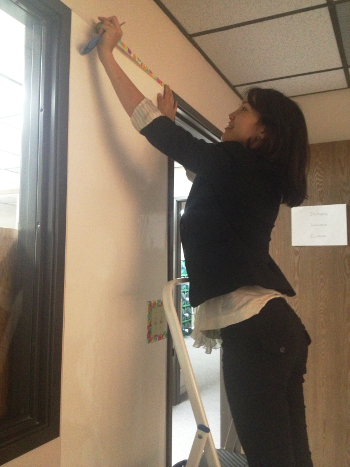4 Ways the Search Industry Changed – A Rip Van Winkle Report
After almost 3 years away, I’m back. The world of SEO sure didn’t stand still. But beyond the expected search engine updates and technology advances, the industry itself has changed in some fundamental ways.
My total immersion into all-things-search began in 2008 when Bruce Clay, Inc. hired me as a senior technical writer. Working at BCI is an awesome vantage point, and my SEO education and productivity as a writer swelled simultaneously. In late 2010 I left and pursued a different love, teaching. Then after almost three years, one day the phone rang. It was BCI; they had an opening; would I like my old job back? I jumped at the chance. Suddenly I found myself back in the world of Internet marketing and SEO.
Playing Rip Van Winkle for nearly three years has given me a unique perspective. Not only did it confirm that an English degree is one of the most flexible career preparations ever. It also showed how quickly a fast-paced industry fueled by creative people and incredible technology can change.
Here are the top 4 most striking differences I see between the search industry of 2010 and now.
Cheaters don’t get away with it anymore.
Google, the great referee in the organic search game, has gotten better at spotting cheaters and making sure they don’t win. Three years ago, links alone could substantially boost a site’s rankings. “Link building” was still the rage. Longer-term strategies we would recommend to clients – like attracting links with engagement objects, writing more content, etc. – were not always received with enthusiasm. Companies in 2010 would get impatient watching their competitors who were buying links and doing spam gain in the search results.
Thankfully, those days are mostly over. Google’s Penguin update and other algorithm changes have enforced search engine quality guidelines more effectively than ever before. (Do penguins have teeth? This one sure did.) The penalty actions have been so aggressive, in fact, that there have been some undeserving casualties, too. But overall, Google’s war on spam has made the organic SEO field a much fairer place. And businesses, now wary of search engine penalties, are much more willing to put in the time and effort to do SEO right.
Reasons for hiring an SEO consultant have changed.
Getting traffic has always motivated people to optimize their websites for organic search. But in the past, most clients sought SEO consulting because they’d had a taste of ranking success and craved more. Having a few ranking pages had brought in enough traffic to whet their appetites, and they wanted expert advice on how to expand that success.
Today, many businesses need SEO consulting for the opposite reason: failure. Bruised and bloodied by Google penalties, they seek professional, white hat SEO services to help them just get back on their feet and start over. Bruce Clay, Inc. now offers something called the SEO Penalty Assessment, a service that didn’t even exist back in 2010, to diagnose problems and lay out a roadmap for a website’s recovery.
Content approach is way more strategic.
Three years ago almost any post was a good post as long as it kept a stream of fresh content flowing and engaged the readers. Not so anymore.
The Bruce Clay, Inc. blog used to publish a new post every day (considered too much content now) and a weekly “Friday Recap.” I miss the Friday Recap, actually — a rambling, humorous review of awesome links we writers collected through the week. It was an almost-anything-goes hodge-podge of pictures, videos, and articles. People loved our Friday Recaps, especially those written by the witty Lisa Barone, and we were meeting our goal of high audience engagement. But sometime after I left the company, our SEO tools revealed what no one wanted to hear — that having 20% of our blog content splattered across the keyword galaxy was diluting BruceClay.com’s relevance for our primary subjects. We were starting to rank for “puppies” and “cupcakes.” The Friday Recap had to die.
Today, the blog’s approach to content creation has shifted away from “say a ton” to “say the right things.” BCI has always set the bar high for quality, but it used to seem important to blog a lot, comment a lot, be heard a lot. Our blog strategy has matured and calmed down since then. We’ve reduced our posts to two or three a week in order to prevent reader overload. And we choose topics more strategically. Where we used to have a brainstorming list of blog post ideas scrawled on a white board, we now have a shared document called “Topic Holes” that we’ve built based on keyword research and analyzing our site traffic. Like I said, it’s gotten much more strategic.
Finally, the industry has gotten more professional.
In saying the industry has become more professional, I don’t mean that Matt Cutts has stopped wearing t-shirts in his official Google Webmaster Help videos.
But methodology has solidified around ideas that, a few years back, were pretty much just do-it-your-own-way suggestions. We used to just “write good content” and “engage your community”; now there’s a whole field called content marketing. Social media has also grown up. Analytics, tracking tools and rapidly improving platforms mean you don’t have to just throw comments against a Twitter or Facebook wall and hope something sticks. You can analyze what works, replicate it, track it, slice it and dice it to such an extent that using social media is no longer a vague recommendation, but a necessary part of Internet marketing and SEO strategy.

The old “writers’ room” at Bruce Clay, Inc. has grown up, too. Officially called the Content and Media Creation department now, our team of writers has gotten a lot … quieter. We research, we write, we run analytics, and we write some more. We used to talk a lot, keeping up on the latest search engine developments, sharing industry news and Twitter discussions, and reacting to the latest cute puppies video we’d discovered. (It was totally work related – remember the Friday Recap?)
These days the atmosphere is productive, energized, strategic. We use the SEOToolSet® before and after we write a new page to make sure we’re hitting our SEO targets. We use Google Docs, Google Drive, Basecamp, Toggl, and other online management tools. And for a low-tech visual approach, we also have an entire wall covered with a three-month project calendar. Our super-organized editor, Virginia Nussey, even squeezed white board wallpaper into every available space to give us more room to track long-term strategies and wish-lists. And once a week we have a scheduled R&D meeting, where we strategize together and let the creative juices flow. It’s awesome.
It’s exciting to see how much Internet marketing has grown up in three years. And I’m glad to be back in the learning curve. (Just for old times’ sake, check out these adorable puppies!)

7 Replies to “4 Ways the Search Industry Changed – A Rip Van Winkle Report”
Thanks Paula Allen for SEO awareness and future predictions and i agree that industry will become more professional but basic idea that is quality would remain same.
and hahahaaaa Matt Cutts will always wear t-shirts.
The article is very good and neat. Now the focus is shifting to social seo marketing and google loves that very much.
Great article and I really love it.
Hi.. We use Google Docs, Google Drive, Basecamp, Toggl, and other online management tools. And for a low-tech visual approach, we also have an entire wall covered with a three-month project calendar. Thank you..
LEAVE A REPLY









